What Animal Live In The Emergent Layer
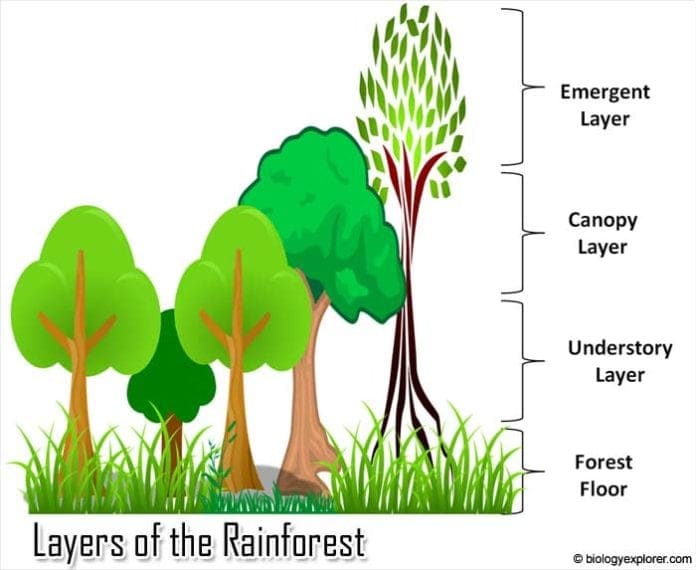
Layers of the rainforest: Among all biomes, tropical rainforests are considered to accept the highest biodiversity. In a hectare plot of tropical rainforest land, nearly 40 to 100 tree species can already be constitute. Aside from this, the tropical rainforest biome is home to the most mutual species of the rarest organisms on our planet.
The world's tropical rainforests are located in the warmest yet wettest places in the globe (i.e., place close to the equator). Such atmospheric condition brand these places ideal environments for life. The tropical rainforest is a consummate surround from top to bottom.
In full general, it is divided into four layers: emergent layer, canopy layer, understory, and the forest floor. These layers host several species of tropical animals and tropical plants. Learn more than near these layers below.
Tabular array of Contents
- Layers of the Rainforest
- 1. Emergent Layer
- Animals in Emergent Layer
- 2. Canopy Layer
- Animals in Canopy Layer
- three. Understory
- Animals in Understory Layer
- iv. Forest Floor
- Animals in Wood Floor
- Cite This Page
- 1. Emergent Layer
- References
Layers of the Rainforest
1. Emergent Layer
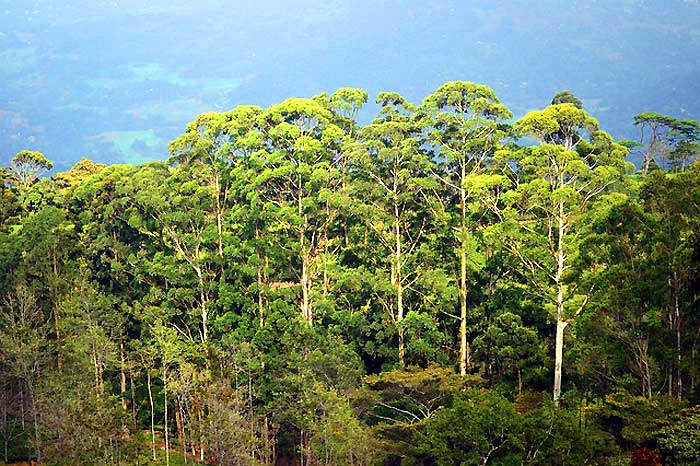
The first layer of a tropical rainforest from the summit is called the emergent layer. The emergent layer consists of towering trees (basically taller than about trees in the woods) that protrude out of the balance of the plants in the area. The average height is well-nigh 70-100m from the basis level.
- It can be inferred that trees found in the emergent layer tend to feel the extremes of environmental conditions. Existence at the top means they receive direct oestrus from the sun, causing them to dry out constantly. Rains and winds also tend to strain them out. Fluctuations in temperature, from high temperatures during the day to extremely cold ones at night, also torn them downwards.
- To adapt to these said atmospheric condition, trees develop minor yet very tough leaves coated with thick wax that can assist withstand them. Meanwhile, to grow in the emergent layer, plants and animals should suit to the brilliant sun rays and yet strong winds.
- Another accommodation exhibited by animals living in the emergent layer is their small-scale sizes. Many branches in the tree canopy are thin and cannot support heavy weights; therefore, animals that live there are usually the flying and the gliding ones.
Animals in Emergent Layer
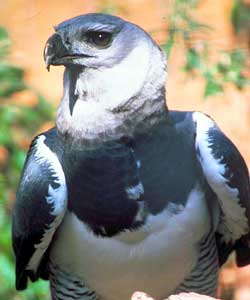 Mutual animals in emergent layer are birds (such equally Harpy Eagles, Cherry Macaw, etc.) bats, some insects, pygmy gliders, rainforest monkeys (such as capuchin monkeys, squirrel monkeys, etc.) and morpho collywobbles (blue colored ones).
Mutual animals in emergent layer are birds (such equally Harpy Eagles, Cherry Macaw, etc.) bats, some insects, pygmy gliders, rainforest monkeys (such as capuchin monkeys, squirrel monkeys, etc.) and morpho collywobbles (blue colored ones).
The trees plant in this layer accept huge advantages of the heights they are in. Because they are in the most openly spaced surface area in the forests, these trees tend to spread their leaves out to get sunlight every bit much as possible.
![]()
2. Canopy Layer
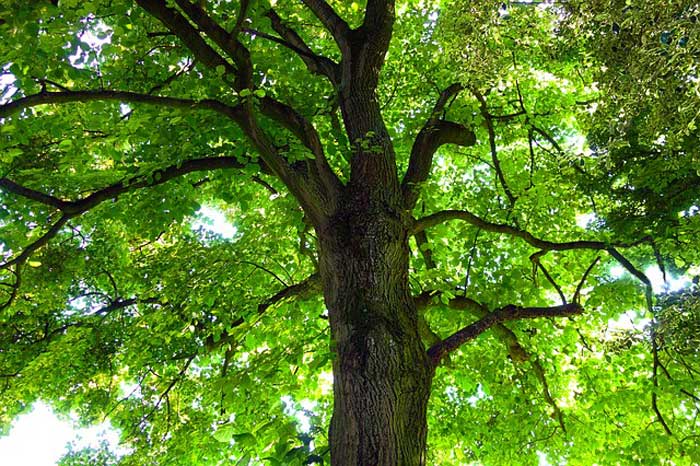
The adjacent layer is the canopy layer, which is known to contain the bulk (virtually 60 to 90%) of living species in the whole rainforest. The canopy layer, which is most 100 feet above the basis, contains overlapping alpine trees that human activity as a roof over the balance of the organisms below them.
- The atmospheric condition of this layer are somewhat different from the residuum of the other layers. During the daytime, the canopy layer becomes the hottest part. Another affair is that due to the overlapping trees and leaves, even organisms of the aforementioned species find it hard to see each other. Hence, they developed adaptations like loud calls and sounds to communicate.
- And simply like in the emergent layers, animals capable of flying and gliding are as well present here.
Animals in Canopy Layer
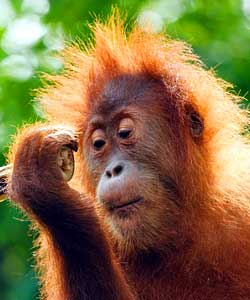 Every bit Canopy layer is rich with fruits and nuts, organisms such every bit insects, various species of birds, lizards, monkeys (such as Bornean Orangutan), rodents, and tree frogs thrive in here. It is believed that almost 90% of rainforest animal species reside in this layer of the rainforest.
Every bit Canopy layer is rich with fruits and nuts, organisms such every bit insects, various species of birds, lizards, monkeys (such as Bornean Orangutan), rodents, and tree frogs thrive in here. It is believed that almost 90% of rainforest animal species reside in this layer of the rainforest.
The leaves of the canopy layer can be likened to mini-solar panels that human activity as a source of power for the whole rainforest. These leaves do this past converting sunlight into useful free energy form through the process of photosynthesis. Because of this, the rate of photosynthesis is very high that these plants go higher yields too.
![]()
3. Understory
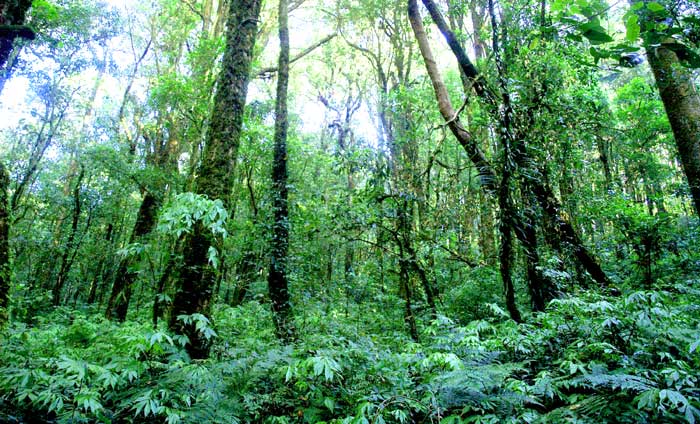
As compared to the start ii layers, the understory is rather more boiling and damp. Such humidity level is what keeps the animals in this layer alive.
- The understory as well called the strata, is composed of shrubs, herbaceous plants, ferns, climbing plants, and young trees that are well adjusted to areas receiving low sunlight.
- The tree trunks found in this layer come up in a wide diverseness of shapes, sizes, thickness, and textures. Likewise, these trunks come in many colors because of the presence of lower plants like mosses, lichens, and fungi that are attached to the trunks and branches of trees.
- Climbing plants and vines are also concentrated in this layer. These plants get-go germinated on the Forest flooring and begin to "climb" up by using a host institute until they reach the bespeak where enough sunlight is present.
- In this layer of the rainforests, insects are most likely to exist found. And because piddling to no seasonal changes occur in this layer, insects like mosquitoes tin successfully breed all year long.
Animals in Understory Layer
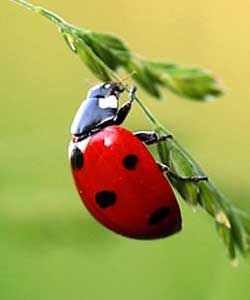 Organims in understory layer include insects, bees, beetles, butterflies, birds, geckos, bats, monkeys, snakes, lizards, jaguars and tree frogs. Birds and geckos casualty on insects and snakes prey on small mammals.
Organims in understory layer include insects, bees, beetles, butterflies, birds, geckos, bats, monkeys, snakes, lizards, jaguars and tree frogs. Birds and geckos casualty on insects and snakes prey on small mammals.
The understory is basically a dark environment where sunlight is only near two to 15%. Hence, organisms living in this layer take become adapted to tolerate the low amount of sunlight.
![]()
iv. Forest Floor
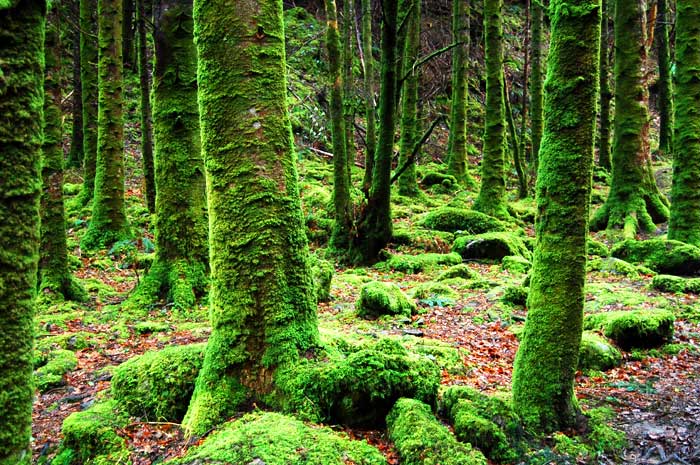
Last but non the least is the Forest flooring layer. This layer is often described as the darkest and most boiling layer of a tropical rainforest as it receives less than 2% of the total sunlight.
- The Forest floor receives all fallen leaves, twigs, branches, fruits, and seeds from the three layers above information technology. All these materials, coupled with the hot and humid weather, allow quick decomposition, making the woods floor the near nutrient-rich layer of all.
- The process of decomposition is facilitated by different bacteria and fungi that break downward materials and recycle the nutrients.
- Because of its location, the forest flooring is where large terrestrial animals can be establish.
Animals in Forest Floor
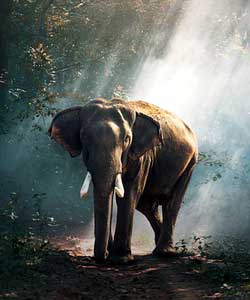 Animals in the forest floor are the tigers, Jaguars, elephants, and tapirs. Another example is the disguised pigs. They scour the ground for everything fallen on the forest floor that includes fallen fruits, fungi, and feces. In a fashion, they assist to spread the tree density in the rainforest by dropping the seeds via their feces/dung.
Animals in the forest floor are the tigers, Jaguars, elephants, and tapirs. Another example is the disguised pigs. They scour the ground for everything fallen on the forest floor that includes fallen fruits, fungi, and feces. In a fashion, they assist to spread the tree density in the rainforest by dropping the seeds via their feces/dung.
And because of its low location at the ground level, this layer of the wood was the outset to be explored and probably the about intensively well-documented.
Considering of the constant rains that launder down rainforests, the soils are lacking in with essential nutrients. Because of this harsh environment, plants and animals cannot afford the added disadvantage of being eaten by their larger predators.
Hence, they take adult various adaptations and strategies to survive. And despite being mega-various, the tropical rainforest is considered as one of the about threatened and almost vulnerable biomes on World.
![]()
For a long time, tropical rainforests were unharmed from man's exploitation and anthropogenic activities. But because of man's constant search for the source of lumber and space for industrial evolution, our tropical rainforests are already at risk for destruction.
![]()
Cite This Page
References
- "Rainforests". Accessed November 14, 2017. Link.
- "Layers of the Rainforest". Accessed November 14, 2017. Link.
- "The Rainforest Canopy". Accessed Nov 14, 2017. Link.
- "The Understory Layer". Accessed Nov xiv, 2017. Link.
- "TROPICAL RAINFOREST UNDERSTORY LAYER FACTS". Accessed November xiv, 2017. Link.
- "The Rainforest Floor". Accessed November 14, 2017. Link.
- "Tropical Rainforest Layers". Accessed November 14, 2017. Link.
Source: https://www.bioexplorer.net/rainforest-layers.html/
Posted by: harrispresucest.blogspot.com

0 Response to "What Animal Live In The Emergent Layer"
Post a Comment